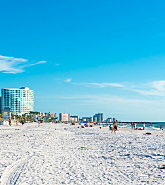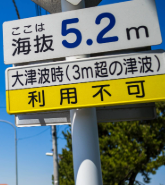On Friday, February 15th two asteroids made close encounters with Earth. The 45 m diameter asteroid 2012 DA14 and its “near miss 27,000 km height trajectory” had been anticipated for weeks. The unnamed 15 m diameter asteroid that plunged south over central Russia was a total surprise. Do asteroids behave like London buses? These two were 14 hours apart, during which time the Earth, moving approximately 30 km per second, had travelled 1.5 million kilometers in its orbit. The two stones approached from opposite directions. And yet in terms of cosmic billiards it looks like February 15th was the day. What is the chance of that particular insurance clash?
And why do they seem to pick on Russia? The largest asteroid (or comet) impact we know about happened at Tunguska in the uninhabited forests of central East Siberia in 1908. That event was said to have been caused by a stone measuring up to 100 m across, which exploded 5-10 km above ground, causing an airblast which released the equivalent of 5-30 megatons of TNT, felling 80 million trees over 2,150 square kilometers.
Now Chelyabinsk has experienced what is now claimed to have been the worldwide “hundred year event” (a statistic I don’t buy) over southern Western Siberia. Russia covers 17 million square kilometers and is the largest country in the world but still only represents 2.5% of the total area of the Earth. What is the chance the #1 and #2 events since 1900 both hit Russia? (What is the chance we may have missed similar events over the 70% of the Earth’s surface that is water?)
The 1.1 million inhabitants of Chelyabinsk were really quite lucky, the angle of entry of the 10,000 ton stone was very glancing, so that the asteroid had a long glide path. It took 32.5 seconds from atmospheric entry moving at 21 km/second to disintegration, at which point it was still 20-25 km above ground level. Any lower and the blast would have been much stronger on the ground. (Contrast that with the near vertical trajectory of the asteroid that created Meteor Crater in Arizona 50,000 years ago – a stone only 40 m wide moving at 11 km/sec, which dug a crater 1200 m across and 170 m deep.)
Airblasts similar to the one in Chelyabinsk are a very potent way of causing damage – in particular to windows – over a very wide area. Airblasts from the V1 warhead of 850 kg of TNT could extend to a 400-550 m radius. In Chelyabinsk it was estimated 200,000 square meters of windows had broken with a total repair cost of 1 billion Russian Roubles (33 million U.S. dollars). Most of the 1200 people injured were cut by flying glass. Some of the damage will be paid by insurance – and some probably Putin will see, too, as now he likes to be on the ground, with a checkbook, after any Russian catastrophe.
One of the biggest recent airblasts was from an explosion of 300 tonnes of ammonium nitrate at a fertilizer plant in Toulouse, France, ten days after 9/11. The plant was situated 3km south of the center of the city (population 440,000). The explosion left behind a crater 20-30 m deep and 200 m across. It was fortunate that pressurized chlorine and liquid ammonia vessels and tankers on the site were not ruptured. Still more than 2,500 people were injured and 30 killed including eight beyond the factory. The explosion also blew out two thirds of all the windows in the city. The insurance claims totaled 1.5 billion Euros.
It seems traditional to run asteroid impact events over New York to get some local perspective. RMS wrote a report about the 1908 Tunguska event happening over New York. The total population of the New York metropolitan area is around 22 million, contrasted with 1.1 million in Chelyabinsk. People have larger houses and offices than in Russia, but windows are generally better protected against wind overpressures in hurricanes. One can estimate that an equivalent asteroid/meteor impact over greater New York would break several million square meters of windows costing at least 500 million U.S. dollars to replace. Then there would be contents, damages, injuries, workers’ compensation, business interruption – so that the total insurance loss would probably add up close to 1 billion U.S. dollars.
This is a reminder of one of the many sources of loss covered by insurance for which there is no model. There are an estimated one million asteroids out in space that are smaller than 100m across in diameter, in orbits with the potential to intersect Earth. However, to put the Chelyabinsk blast into perspective – the total energy release was only 20% of that of a M7.5 earthquake.






